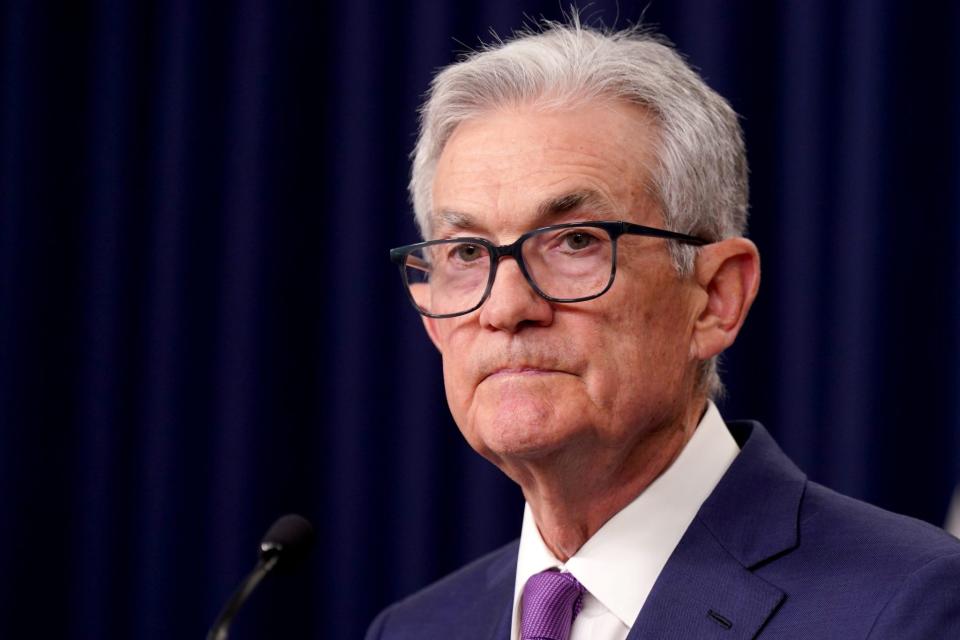Jerome Powell is vague on rate cuts because he’s ‘petrified’ of repeating the mistakes of one predecessor, says ‘Big Short’ investor Steve Eisman

Federal Reserve Chairman Jerome Powell has avoided announcing interest rate cuts in recent months despite a steady drop in U.S. inflation, and Steve Eisman, a senior portfolio manager at Neuberger Berman, has a theory about why.
The veteran investor who rose to fame after he was portrayed predicting and profiting from the 2007–08 supreme mortgage crisis in the 2010 book, The Big Short, and a subsequent film of the same name, believes that Powell has learned from history, particularly the history of Paul Volcker, the Fed chair known for defeating inflation in the 1980s and sparking a recession in the process.
“I actually think, deep down, Powell is petrified of redoing Volcker again,” Eisman told CNBC Monday.
To understand what Eisman is getting at, we have to delve into some 1970s and ’80s economic history, including the tenures of former Fed chairs Volcker and Arthur Burns, and the pivotal moment of that era which resembles the early 2020s.
Avoiding a ‘Volcker shock’—by doing nothing
Paul Volcker is probably the most famous Fed chairman of all time. “Tall Paul,” known for his height, his dour demeanor, and his habit of chomping on an unlit cigar while testifying to Congress, has gone down in history as a visionary. He’s often praised for combating the rampant inflation of the 1970s by raising interest rates at an unprecedented speed in the early ‘80s. His success in the role paved the way for the eventual triumph of Ronald Reagan on the back of an economic recovery, and the birth of a whole financial regime that lasted until at least the Great Recession of 2008.
On the other hand, Volcker’s predecessor, Burns, is lambasted in the history books as a passive chair who failed to take action as inflation ran up and away, setting the stage for Volcker’s emergency surgery. But what often gets lost in the history of that era—and what Eisman is referring to—is that it took multiple rounds of rate hikes and a short but nasty recession for Volcker to truly defeat inflation.
After what is now called the first “Volcker shock”—where Volcker raised rates to over 18% to fight inflation quickly after taking office in August 1979—rates were actually slashed to around 9% by the summer of 1980 because the economy was stumbling.
Then, with inflation proving persistent, Volcker raised interest rates again to a peak of roughly 20% by January 1981. The policy amounted to a whipsaw for the economy and sparked a serious recession in 1981 and 1982, where the unemployment rate surged to a peak of 11%—the highest level in post-WWII history, barring the brief, COVID-induced spike in 2020.
Eisman believes it’s this fate that Fed Chair Powell is hoping to avoid today. With inflation fading, instead of cutting interest rates right away, Powell is attempting to slowly lower rates over time to avoid the type of whipsaw monetary policy that can spark recessions.
“Put it this way, they’ve engineered what looks to be a soft landing. Inflation is coming down, the economy is still strong, why would you waste rate cuts now and risk a resurgence of inflation?” Eisman argued.
With inflation fading and the economy proving it can withstand the current level of interest rates in recent months, Fed Chair Powell’s best option might be to simply do nothing, instead of opting for economy and market-juicing rate cuts.
Eisman argued that the Fed can already “declare victory” over inflation and that it has “engineered something really pretty fantastic.” That means, unlike Paul Volcker, who was faced with persistent inflation and a weakening economy in the early 1980s that in some ways forced him to choose between inflation or a recession, Powell has the luxury of simply waiting to see how the economic data looks in coming months before altering policy.
According to Eisman, the Fed should just say something like: “We will wait to see some data. If the economy really starts to weaken, we will hold [rate cuts] in reserve, and until then we’ll just leave things the way they are—they seem to be pretty good.”
“What’s the matter with that?” he added.
Eisman’s remarks contrast with earlier analysis of Powell’s tenure, with many financial observers claiming that the Fed chair was trying for the exact opposite: to draw comparisons to Volcker and avoid any with Burns.
This story was originally featured on Fortune.com

 Yahoo Finance
Yahoo Finance 